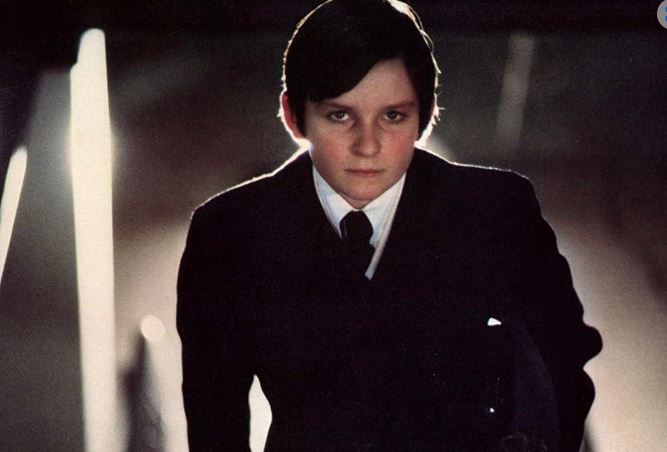
Damien: Omen II (1978) & The Final Conflict (1981)
The Omen’s head-lopping, priest-spearing supernatural delights have meant it’s never dropped out of my horror top ten. And when it comes to its sequels, I’ve never had a problem. They aren’t simple repetition in that we’re following Satan’s son from birth to adulthood. That’s gotta mean plenty of opportunity for bloody shenanigans so why not take three movies to tell such a grand story?
And Damien certainly opens well. Jerry Goldsmith’s rejigged soundtrack does its goosepimply stuff while our only survivor from part one, the archaeologist Bugenhagen (Leo McKern), tries to convince a mate in the Middle East that the raven-loving Antichrist is living in Chicago. After showing him an underground mural clearly depicting Damien’s face, the whole place starts falling apart. “Goodness will prevail!” Bugenhagen cries while trapped in a tunnel with the choking sand piling up to his chin.
But will artistic quality?
Well, no. Damien wobbles for the next half hour until a wonderfully absurd cameo from a pushy photojournalist. Did I say pushy? I meant a ranting, bug-eyed doomsayer dressed in bright red. “Put your strength in Christ!” she wails at Damien’s latest human stepdad. “Only he can protect you!” Meanwhile, the thirteen-year-old Damien (Jonathan Scott-Taylor) is already showing his bad boy mettle by trying to bum a ciggie off his chauffeur and making unflattering cracks about a lavender-doused aunt. Bloody hell, what next? Letting off fireworks through letterboxes?
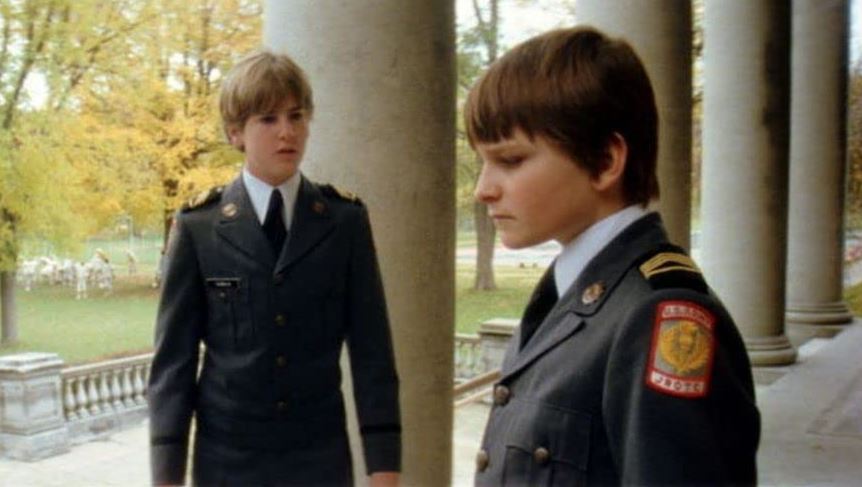
This sequel is nowhere near as good as its predecessor, lacking the marvelous ambiguity about Damien’s true nature and the gravitas of its compelling storyline. Still, it has strengths. William Holden is a decent choice to fill Gregory Peck’s shoes. Scott-Taylor makes a good fist of the title character. It’s also apt that the Antichrist should hone his skills in a military academy (even if those episodes go nowhere) while that gorily inventive elevator death scene always amuses. Pity about the fudged attempt to give the telekinetic Damien a conscience. I think this was the right way to go (rather than making him a fork-tongued Michael Myers type), but the half-baked screenplay only results in him grappling with doubt for about five seconds.
Damien can be safely filed under enjoyable nonsense. It never threatens to become a good flick whereas the Final Conflict is surprisingly worthwhile. It ups the stakes by moving away from Damien’s struggles to avoid detection to widening the assault on humanity and getting down to the inconvenience of the Second Coming. Yes, it could do with more actual Armageddon, but it still manages to mix politics, global turmoil, astronomy and murderous monks (“Arm yourselves in the name of the Lord!”) There are also welcome echoes from the first film, such as our old friend the Rottweiler, a handful of spectacularly violent deaths, animals going batshit crazy, and Damien taking over Gregory Peck’s former job as Ambassador to Great Britain. There’s plenty of good imagery and solid location work, too, all bound together by Goldsmith’s suitably epic music.
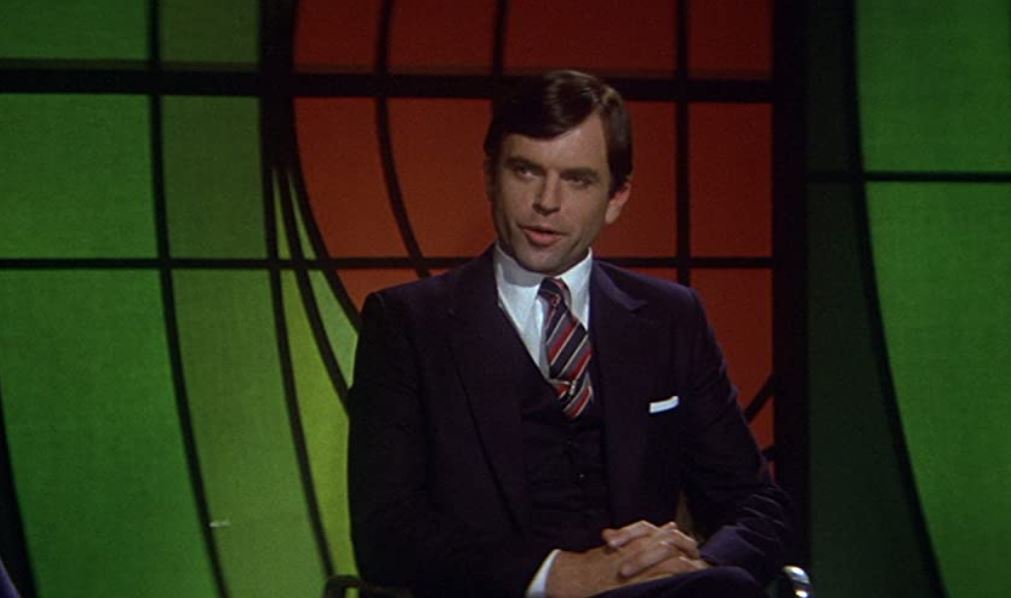
The handsome, super-smooth Sam Neill is well cast as the Antichrist, a Manson-type leader who’s so charismatic that his devilish apostles include vicars, nurses, boy scouts and baby-ironing mums. One minute he’s playing with a radio-controlled toy boat, the next he’s daubing a corpse’s blood on a child’s eager face. He’s at his best during a gloomy scene in which he prays to his satanic dad in front of a life-size crucified Jesus, a ghastly effigy that brings to mind the miniature Saint Sebastian in Carrie’s punishment cupboard. “Oh, my Father, Lord of Silence, Supreme God of Desolation, whom Mankind reviles but who aches to embrace,” he says while occasionally fondling the tortured muscles on Jesus’ outstretched arms. “Strengthen my purpose to save the world from a second ordeal of Jesus Christ and his grubby, mundane creed.
Two thousand years have been enough! Show Man instead the raptures of thy kingdom. Infuse in him the grandeur of melancholy, the divinity of loneliness, the purity of evil, the paradise of pain. What perverted imagination has fed man the lie that hell festers in the bowels of the earth? There is only one hell: the leaden monotony of human existence. There is only one heaven: the ecstasy of my Father’s kingdom. Nazarene charlatan, what can you offer humanity? Since the hour you vomited forth from the gaping wound of a woman, you’ve done nothing but drown Man’s soaring desires in a deluge of sanctimonious morality.”
Shit, I think he’s got me convinced. Where do I sign up?
Anyhow, Final Conflict is better than its critical reputation. There’s a lot to enjoy, although you do wonder why the Antichrist bothers when biblical prophecy (which is always shown as infallible) clearly indicates he’s not gonna triumph. Oh well, I guess it’s the trying that counts. Apparently, there’s a part IV in which everything starts again, except now the Antichrist is a little girl.
Jesus wept.
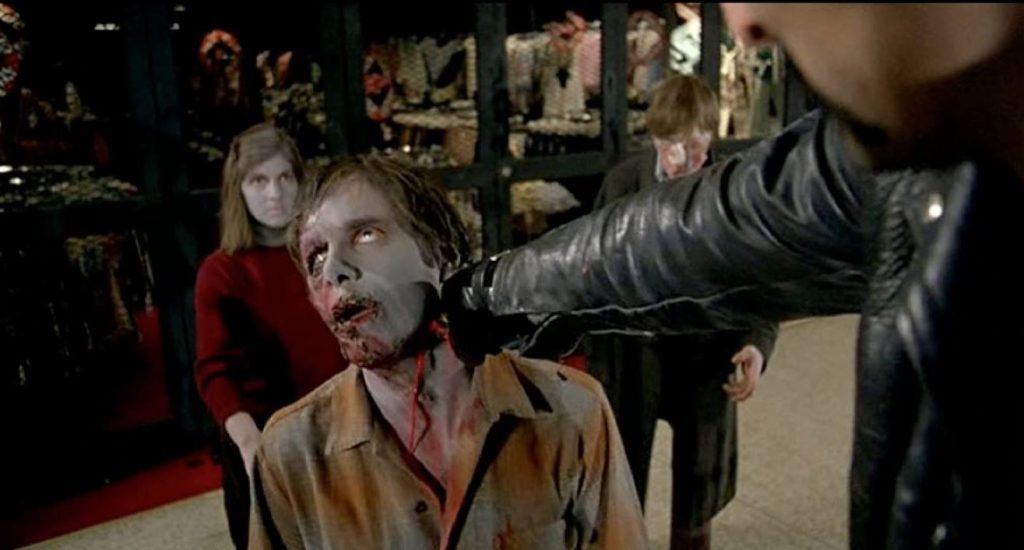
Dawn of the Dead (1978)
Despite its groundbreaking, runaway success, 1968’s Night of the Living Dead didn’t immediately result in an avalanche of apocalyptic zombie films. Those that popped up in its wake preferred to tell small stories about the newly animated dead, such as the quite good Vietnam War hangover Deathdream, the atmospheric, off kilter Messiah of Evil, the goofy slice of blaxploitation Sugar Hill and the rubbish England-set Let Sleeping Corpses Lie. Both 1972’s medieval-flavored Tombs of the Blind Dead and 1977’s Nazi-tinged Shock Waves have interesting premises (but botched executions) that deserve a remake.
However, it wasn’t until Romero returned to flesh-eating zombies en masse that the sub-genre became established, leading to the likes of Shaun of the Dead, Resident Evil, Train to Busan, 28 Days Later, World War Z and a hundred others. Worldwide, it’s astonishing how many zombie films (apocalyptic or otherwise) get produced, often totaling more than twenty a year.
The big hit Dawn has a similar set up to Night in that it mainly portrays a siege. Things have gotten much worse, though, with the zombie strength in urban centers now nearing tipping point. This is ably demonstrated during a police raid on a low-income housing project, a botched operation that gleefully spews up exploding heads, the gnawing of dismembered limbs, racism, rampant brutality and suicide. Our four heroes flee the growing chaos via a stolen helicopter and hole up in a shopping mall.
Forever.
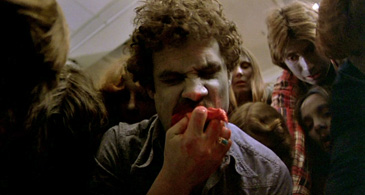
Or at least it seems that way.
Dawn exists in a variety of cuts, one of which is more than 150 minutes long. I watched Romero’s 129-minute version, but half an hour could’ve easily been lopped off. The flick takes far too long at the mall, a decision that really slows momentum after its convincing opening depiction of a society falling apart. That’s not to say Dawn is a bust, especially as it features a screwdriver being jammed into a lug-hole, a machete slamming into a skull, and a zombie getting the top of its head removed by a whirring helicopter blade. It remains mostly decent at tapping into the anxiety of being relentlessly pursued by an enemy that cannot be reasoned with, a key horror ingredient of so many flicks like The Terminator, The Thing and It Follows.
However, the hundred minutes it spends inside the mall (and its blackly comic take on consumerism) is a mistake. Matters aren’t helped by uninteresting characters, lame greasepaint makeup, a frequently inappropriate or plain terrible score, and the odd custard pie fight. I would’ve preferred Romero to have explored the other meaty issues he touches upon, such as pregnancy and a priest saying he’s just given the last rites to a bunch of the newly bitten. Where is God in this unfolding catastrophe? Are the zombies part of his grand plan? And is there any point in reproducing when everything’s not only gone to shit, but your swelling belly and decreasing mobility make you so much more vulnerable to attack?
Dawn of the Dead is a historically significant and deeply influential horror flick, but I’ll be trying the 119-minute European version next time.
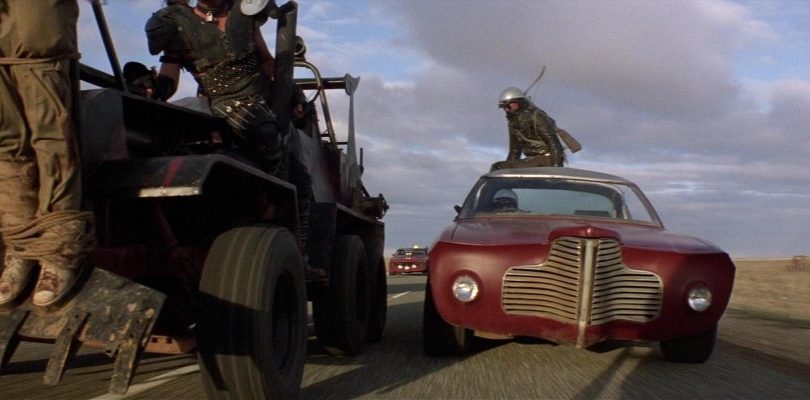
Mad Max 2 aka The Road Warrior (1981)
Filmed around the aptly named Broken Hill in New South Wales, George Miller’s superb direction, relentless pacing and outstanding stunt work combine to have a riveting effect in this post-apocalyptic road classic. He creates a world of souped-up engines, speed junkies, rolling cars, explosions, highways littered with the burnt-out shells of upside-down vehicles, all-out aggression, and spectacular crashes and collisions long before the facilitating days of CGI. Indeed, the outback is as forbidding a place as you’ll see in moviedom, a dusty, windswept hellhole full of murder, rape, immolation, and… er, feather boas.
For that’s one of the more noticeable aspects of this vividly depicted dystopia. There might not be an ounce of sentiment or barely a trace of comedy anywhere, but it’s hard to deny Mad Max 2’s overwhelmingly camp look. Now it sure as hell doesn’t have a camp feel â the violence and all-round grim presentation of a world gone to shit ensures that â but men do prefer the company of other men. During breaks from raiding, they fuss over each other’s hair. Shoulder pads, dangly silver earrings, furs, studded arm bands, face paint, lightweight chains, shaven chests, bare nipples and arse-baring chaps are all the rage.
Our combatants are dressed like gladiators, traffic cops, punks or fashion show models. One of the chief baddies is a mohawked, leather-clad biker who becomes awfully upset when his mute, blonde companion is killed. Christ, even Max’s dog wears a fetching red neckerchief. This is one flamboyant bunch that, nevertheless, can’t stop killing each other. As a result, Mad Max 2 often plays like a massive fight between the cast of Dynasty, 1970s-era Judas Priest, the Village People and Blue Oyster Bar patrons zonked out of their brains from sniffing petrol fumes and angel dust.
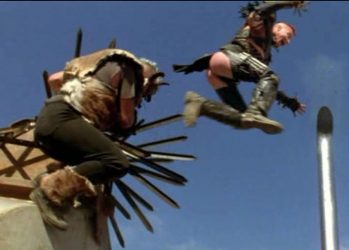
Max is now a dog food-eating, gasoline-obsessed scavenger, traveling along a ‘white line nightmare’ in a supercharged V-8. Like the Man with No Name, he’s a taciturn loner, indifferent to the suffering and death all around. Inadvertently, he falls in with a group of settlers, but after demonstrating his considerable survival skills against a marauding motorized gang, attempts to make him stay initially fall on deaf ears. “What is it with you, Max?” their leader asks during the flick’s only speech. “What’re you looking for? Everyone’s looking for something. You are happy out there, aren’t you? Wandering. One day blurring into another. You’re a scavenger. A maggot. You live off the corpse of the old world.”
In keeping with Miller’s diamond-hard preference for action over dialogue, Max simply punches this well-meaning critic in the face. Bloody hell, what a character, what a role. This is arguably Gibson’s signature performance. He’s pitch perfect in a fluid, kinetic movie that proved even more influential than the first. Mad Max 2 is a lean action masterpiece, propelled by a driving score and bookended by some deeply satisfying narration.
Four years later Beyond Thunderdome turned up with a three-quarters empty tank and two flat tires surrounded by goddamned snotty-nosed kids.
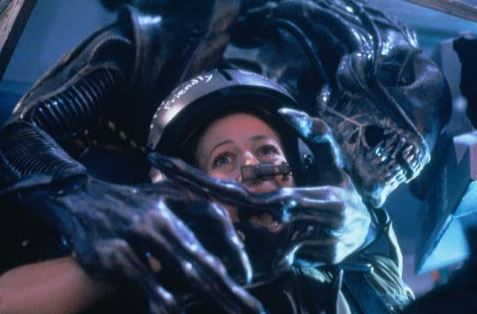
Aliens (1986)
“Listen up: I want this thing to go smooth and by the numbers.”
So says the inexperienced commanding officer of a gung-ho bunch of heavily armed marines before they touch down on an exomoon in a bid to find out what happened to 158 colonists.
But a solitary, traumatized survivor called Newt (Carrie Henn) has a better handle on the situation. “These people are here to protect you,” she’s told. “They’re soldiers.” The ten-year-old Newt can only shake her head. “It won’t make any difference,” she replies.
Hmm, we’ll see what happens during this ‘bug hunt’.
Alien was a haunted house in space movie that emphasized its horror underpinnings. Director James Cameron wisely gives the sequel a tweak by shifting to action/sci-fi. In fact, Aliens feels so much like a war film that it could have been titled Saving Private Xenomorph.
Ripley (Sigourney Weaver) has managed to survive more than half a century in stasis after escaping her alien-ravaged spacecraft, the Nostromo. You can tell she’s been asleep a long time because she wakes up sporting a dreadful curly hairdo like Queen’s Brian May. When told contact has been lost with the intergalactic folk who’ve since made a home in the very place she’s just fled, she warily agrees to return as an ‘adviser’.
But only if every last xenomorph is zapped.
Aliens deserves plaudits for its steady build-up, especially its tense search of the colonists’ deserted base, which initially throws up nothing more threatening than a pair of hamsters. Indeed, Cameron repeats Spielberg’s Jaws trick of keeping the titular monsters hidden from view for as long as possible. Seventy minutes smoothly slide by before a xenomorph bursts out of a victim’s chest. From this moment on Aliens turns into a clash between technology and biology. The marines have their hi-tech firepower while the xenomorphs rely on Mother Nature’s savage gifts.
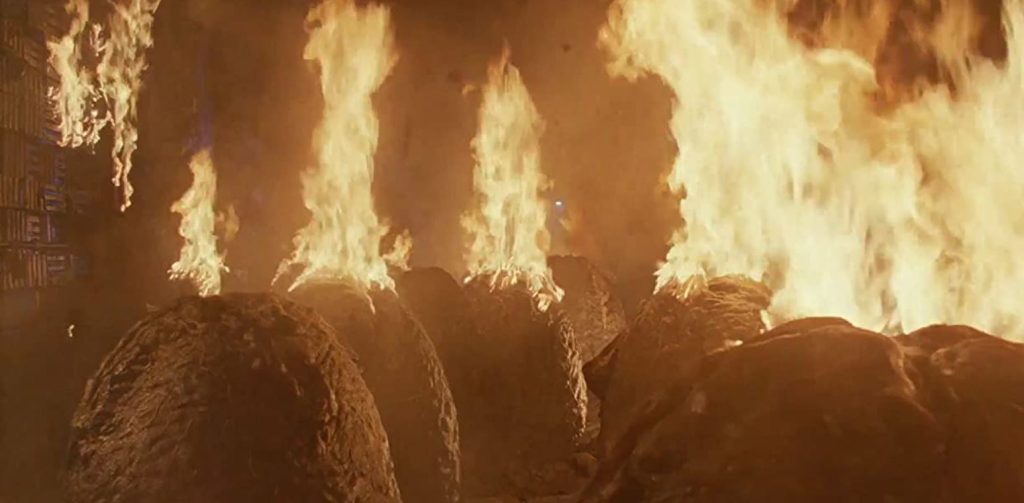
Cameron, who wrote the screenplay, builds on rather than repeats Alien. This can be seen in the way he adds nice little details to the creatures’ lifestyle, such as the face huggers’ increased mobility and the alien queen laying eggs near a cocoon of imminent hosts. He also excels at creating a sense of scale, whether it’s a beautiful shot of the curves of Ripley’s face fading into that of a distant exomoon or panicking humans fleeing from the path of a crashing spacecraft.
Aliens is visually sumptuous and blessed with great special effects, not to mention its cool innovations like Ripley’s exosuit cargo loader and those awesome robot sentries. All the same, things wouldn’t work so well if it had a cast that served as little more than impending alien meals. Everyone is memorably characterized, especially the treacherous company man Burke (Paul Reiser), Ripley’s refreshingly un-annoying surrogate daughter Newt, the panicky Private Hudson (Bill Paxton), the female Rambo Vasquez (Jenette Goldstein), the solid, non-macho Corporal Hicks (Michael Biehn) and Lance Henriksen as a somewhat unfortunate ‘synthetic’. Sorry, artificial person. Without such a tremendous cast, Cameron would never have succeeded in capturing Aliens’ pervasive claustrophobia.